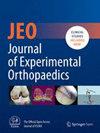Knee osteotomies are becoming widely accepted and increasingly used, but rehabilitation techniques still vary widely between surgeons: A survey on current trends
Abstract
Purpose
The purpose of this research survey was to report the current trends regarding the frequency, indications and techniques of knee osteotomies used in sports medicine practices over the past 5 years and during fellowship training.
Methods
Two Institutional Review Board-exempt anonymous surveys were electronically distributed between May 2023 and August 2023. A 19-question survey was sent to active members of the American Orthopaedic Society for Sports Medicine and European Society of Sports Traumatology, Knee Surgery and Arthroscopy societies and another 36-question survey was sent to orthopaedic sports medicine fellows near the end of their training. The surveys included questions regarding type and frequency of osteotomies performed, surgical indications, surgical techniques, preoperative planning and post-operative weight-bearing restrictions. Inclusion criteria were those who currently perform knee osteotomy surgery. Descriptive statistics were used for all comparisons.
Results
A total of 100 sports medicine surgeons and 26 sports medicine fellows participated in the survey. The most common type of osteotomy performed was a medial opening-wedge proximal tibial osteotomy for both surgeons (96%) and fellows (92%). The most used methods to assess coronal and sagittal alignment were long-leg radiographs (98% for surgeons) and lateral radiographs (66% for surgeons), respectively. Rehabilitation techniques varied between surgeons and fellows and depended on the technique, size of correction and hardware.
Conclusion
Osteotomies are becoming widely accepted as useful techniques to correct bony malalignment. Surgeons are increasing their use of osteotomies, and fellows in training are optimistic about the use of new technologies for osteotomy planning and execution. Trends suggest that osteotomies to correct varus and valgus malalignment for osteoarthritis are the most common, and rehabilitation techniques vary widely between surgeons.
Level of Evidence
Level V.


 求助内容:
求助内容: 应助结果提醒方式:
应助结果提醒方式:


